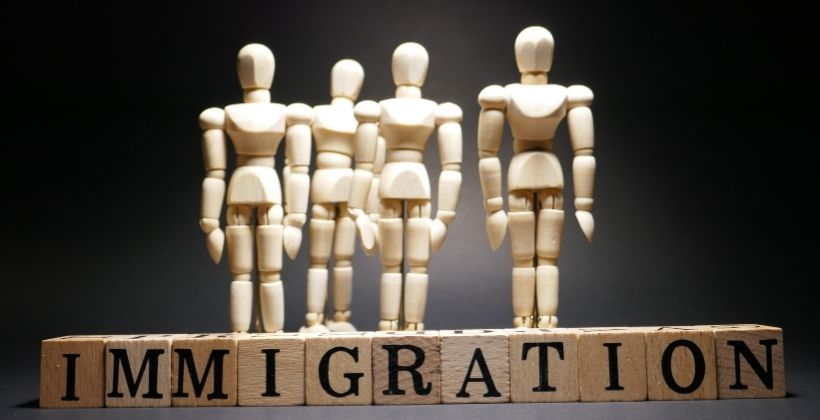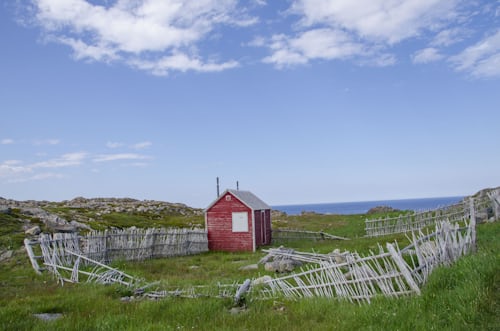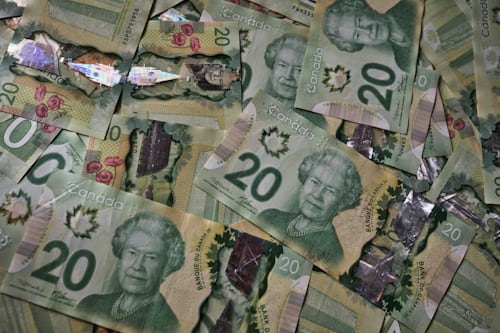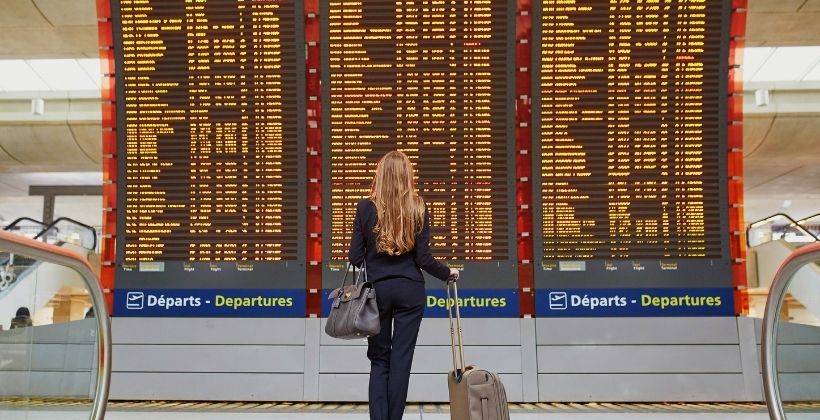Don't Forget These Mandatory Things to do After Landing in Canada
Yes, you are counting the days 4, 3, 2....! The clock is ticking, and your stress level is going up and up. You are still undecided about what things to do after landing in Canada. You don't know what to expect from Border Services and what steps to follow after you land. You are scrambling to figure things out before you leave.
Well, don't panic! Your excruciating pain is very close to ending. Finally, you’re welcome to Canada. HEY! Don't start celebrating quite yet!

Before flying to Canada, you should know:
What you are permitted to bring to Canada;
What to expect at the airport;
What essential documents to carry;
What to do right after you land.
Now, let's go over the details.
Things to do after landing in Canada: Important queries
What you are permitted to bring to Canada?
When traveling to Canada, there are very specific regulations as to what you are permitted to bring into Canada. Some things require extra paperwork, money, effort... and some goods are completely prohibited. Breaking Canadian law can lead to confiscation, a fine, your visa being revoked or even a prison sentence. Let's start discussing which goods you are not allowed to carry. Here are a few examples of restricted or prohibited goods:
You must declare all information regarding all weapons and firearms at the Canadian Border Service Agency (CBSA) port of entry. Find more details about that here.
Declare all food, plants, animals, and related products. A few food items may still be carried with you. Find all information here.
Certain consumer products such as (e.g., baby walkers, jequirity beans) are prohibited from carrying as these can pose a danger to the public.
If you are 18 years of age or over, you can bring 200 tobacco sticks with you. You can know more about carrying cigarettes or alcoholic beverages here. Also, read about what you can bring to Canada and which are restricted on the plane.
What to expect at the airport?
1. Becoming ill while traveling
If you become ill while traveling or have contact with a sick person, you must inform the immigration Canada or border officer at the port of entry. Border authority will further access you and provide instructions. Failure to inform border officers might lead to legal consequences.
2. Disclose funds
You should let the border officer know if you are carrying more than CA$ 10,000. If you don't disclose it, then the border officer may seize your funds. This amount can include:
Cash (In any currency)
Bankers’ drafts, cheques, traveler’s cheques, or money orders
Securities that belong to you (stocks, bonds, debentures, or treasury bills)
3. Doctor's Prescription
Carrying medicine without a prescription can create a hassle for you at the port of entry. It is better that you have 90 days supply of medication accompanied by a doctor's prescription. These medicines do not count in your two luggage carry-on limitations. Once you run out of pills, you can refill the prescriptions at any Canadian drugstore. Before you buy any medication, check your health insurance to find if it subsidizes prescribed drugs.
4. Getting approval of your study permit
If everything is okay, the border officer will issue your study permit and let you enter Canada. If you have any doubt, don't hesitate to ask questions! You will see your personal information on the study permit and the validity of your visa. Be sure to check if all the information on the study permit is accurate.
What essential documents to carry?
Make sure you have all the necessary documents in your carry-on luggage. You will be required to present the following documents to the Canadian Border Services Agency(CBSA) when entering Canada. The required documents are:
Passport
Temporary Resident Visa (TRV) in your passport or Electronic Travel Authorization
Letter of Introduction for your study permit issued to you by a Canadian Visa Office
Letter of acceptance issued by the university
Proof of tuition fee payment and proof of sufficient funds for at least your first year
English language proficiency scores
Other test scores (such as GRE/GMAT) (if applicable)
All necessary academic certificates
Government-issued photo identification such as National Identity card(also known as voter ID).
Birth Certificates
Marriage Certificate (If you are coming with your spouse/common-law partner)
Medical Records
Other Personal Documents.
What things to do right after landing in Canada
1. Collect your Social Insurance Number(SIN) card
Just after you land, you need to apply for your SIN number. It is a nine-digit number that you'll need to work in Canada. If you are in Canada on a temporary work Permit, your SIN card will begin with a “9”. SIN number is required to pay taxes, access government programs, and benefits like Employment insurance.
You can apply for a SIN card online or bring the necessary documents to the nearest Service Canada Office. If you visit the office to apply for a SIM card, it will take no more than 30 minutes.
Social Insurance Number application requires your valid documents that prove your identity and legal status in Canada. For that, you need three types of documents:
Primary Document (that proves your citizenship status in Canada): Documents like valid work permit or study permit in Canada.
Secondary Documents (that proves your identity): You need to have a valid passport, Territory ID or driver’s license, or other government-issued ID cards.
You also need the document to prove your address. You may include-
correspondence from the government
a financial institution, an educational institution, or a bill addressed to you.
Note:
To replace your lost SIN or renew your SIN card, you should visit your local Service Canada branch. If you have all the correct documents and everything is in order, then you will get the Service Canada SIN number on the spot.
If you live more than 100 km from a Services Canada branch or cannot visit a Service Canada Centre because of a particular situation, you can make a SIN application request by mail. But, before mailing your SIN request, you must first get permission from Service Canada. The phone number of Service Canada is 1-800-206-7218 (select Option #3).
It’s important to note that you will only be issued a brand-new SIN if you were the victim of identity theft or fraud.
2. Collect your student ID
You must collect your student ID to access different student facilities such as a library, cyber cafe, etc. To manage it, go to your university with your acceptance letter and photo identification.
3. Open a Bank account
Having a bank account is very important to manage your bills, debit card, and withdrawing money to pay tuition. Usually, banks charge CA$ 220 in fees per year. Go to your nearest bank with your student ID, passport, and SIN card.
4. Buy a bus pass
Before you leave the airport, try to buy a transit card. This card will help you travel to and from at a very cheap cost. PrestoCard can be an option.
5. Get a Canadian Phone Number
Get yourself a Canadian sim card for communication. You can find TELUS, BELL, and Rogers. These three are the largest telecommunication provider as well as the most expensive ones. There are also some cheap options such as Fido, Koodo Canada, Virgin Canada, Public Mobile Canada that are best for a student. You can order a sim card either from Amazon or buy it at your port of entry.
6. Sign up with a Family Doctor
In most neighborhoods, you will find walk-in clinics. It is always a good idea to have a family doctor who would prescribe you medicine in the time of need. Visit nearby clinics to inquire if doctors are taking any new patients. They will ask for detailed health history.
Finding a family doctor:
- Alberta
- British Columbia
- Manitoba
- Ontario
- Nova Scotia
- Newfoundland & Labrador
- New Brunswick
- Québec
- Saskatchewan
- Yukon
7#. Get yourself familiar with the city
Before your class starts, roam around the city to familiarize yourself. You may collect a city map from your university reception.
How early can I enter Canada with a student visa?
This is one of the most commonly asked questions. Theoretically, you can enter Canada as soon as the Canadian embassy gives you the visa. If you plan to arrive early, e.g., 1-2 months, you need to provide valid reasons. There have been cases where students failed to provide valid reasoning and were refused at the entry port.
They were asked to come back just before the class starts. Our suggestion would be to enter Canada at max. Ten days before your class starts. Even if you arrive early, you would not be able to start working. You can start working as soon as your class starts.
Navigation
# Why Canada? # Education System # Student Budget # Student permit/visa # Spousal Visa # After landing # Student Housing # Complete Checklist # Driving License # Study and Work # All Provinces in Canada # PR in Alberta # PR in British Columbia # PR in Manitoba # PR in New Brunswick # PR in NL # PR in Nova Scotia # PR in Ontario # PR in PEI # PR in Québec # PR in Saskatchewan # Cheap Universities # Cheapest Colleges # Alberta DLI # British Columbia DLI # Manitoba DLI # New Brunswick DLI # NL DLI # Nova Scotia DLI # Ontario DLI # PEI DLI # Quebec DLI # Saskatchewan DLI # Part-time jobs # Scholarships in Canada # Survive Winter

Cover Letter

Forwarding Letter

Student Financial Planning

Explanation Letter of Source of Fund

Explanation on previous Visa Rejection


